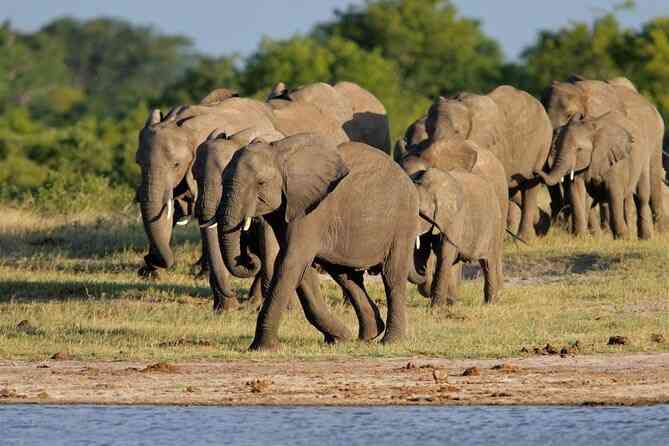
The global community has acknowledged the urgent demand for a robust legal and institutional structure to address wildlife crime. As a result, various treaties, agreements, and organisations have been created to combat these illicit operations.
The Convention on International Trade in Endangered Species of Wild Fauna and Flora (Cites) is a vital component of this framework governing the trade of endangered species. Furthermore, the United Nations Convention against Transnational Organised Crime (UNTOC) recognises wildlife crime as an organised crime.
The UNODC, or United Nations Office on Drugs and Crime, plays a crucial role in the battle against wildlife crime. Through technical assistance, international cooperation, and capacity-building efforts, the UNODC empowers those fighting against wildlife crime. The ICCWC, or International Consortium on Combating Wildlife Crime, is a unified effort among inter-governmental organisations such as Cites, Interpol, the World Bank, and the World Customs Organisation.
The ICCWC's objective is to foster collaboration and coordination among these organisations to combat wildlife crime more effectively wildlife trafficking is a complex and multifaceted phenomenon that has devastating consequences for endangered species, biodiversity, ecosystems, animal welfare, economic development, and human security. It is well documented in official reports and scholarly literature that the scale of wildlife trafficking and its connection to transnational organised crime and corruption are significant issues. The good news is that international and national governments worldwide have recognized the problem, and action against wildlife trafficking has been elevated to the global agenda.
However, the international framework to prevent and suppress wildlife trafficking, consisting of various treaties and declarations, remains inadequate. There is no single international legal instrument that directly or indirectly addresses this issue. Instead, existing multilateral treaties comprise several conventions and other agreements that focus on environmental protection and conservation, organised crime and corruption, and international trade.
The current international legal framework related to wildlife trafficking is limited and disorganised. There is no single international agreement that specifically targets this crime, nor is there any instrument that contains provisions for making wildlife trafficking illegal under national law.
The current international instruments addressing this crime are scattered across various fields including environmental law, trade law, and criminal law. They address wildlife trafficking in the context of biodiversity, protection of endangered species, organised crime, corruption, and international trade. Therefore, the international legal framework pertaining to wildlife trafficking is not comprehensive and needs to be improved.
Cites is an important international legal agreement that regulates and restricts international trade in endangered species. Its main goal is to protect vulnerable and endangered species of wild animals and plants from overexploitation caused by international trade. Cites operates through a permit or licensing system based on whether a species or subspecies is listed in one of the three Appendices to the Convention. Article II of Cites requires that states parties do not engage in trade of specimens of species included under Appendix I, II, or III, except by the Convention's relevant permit requirements.
- Chamisa under fire over US$120K donation
- Mavhunga puts DeMbare into Chibuku quarterfinals
- Pension funds bet on Cabora Bassa oilfields
- Councils defy govt fire tender directive
Keep Reading
Cites does not mandate the criminalization of trafficking in endangered species of wild flora and fauna. While Article VIII of the Convention requires state parties to take "appropriate measures" to prohibit and penalise trade that contravenes its provisions, it does not oblige them to establish criminal offences or impose criminal penalties.
This has resulted in widespread inconsistencies in implementing Cites in domestic legal systems, with penalties ranging from minor administrative sanctions and fines to life imprisonment. Inadequate enforcement has further frustrated efforts to protect trafficked species.
The administrative organs of Cites, particularly its Secretariat and the Conference of the Parties, have made significant efforts to combat wildlife trafficking and continue to allocate increasing resources to this endeavour.
This is evidenced by resolutions passed by the Conference of the Parties, as well as the current draft Cites Strategic Vision: 2021-2030, which acknowledges that effective enforcement is crucial in countering the threat that illegal and unsustainable trade poses to wild flora and fauna. Parties recognise the pivotal role of Cites in global efforts to combat poaching and trafficking of species, addressing both the demand and supply of illegal wildlife products, and tackling organised crime and poor governance, including corruption.
There has been a considerable increase in cooperation between Cites and the administrative bodies of other treaties, UN agencies and NGOs to improve and coordinate responses to wildlife trafficking. Despite these efforts, the role and effectiveness of Cites in combatting wildlife trafficking remain limited.
Cites is not an international criminal law instrument and was not developed or drafted for the international enforcement or prosecution of wildlife crime.
The United Nations Office on Drugs and Crime (UNODC) has expressly stated that Cites "cannot credibly be extended into an agreement to suppress and control every aspect of illegal trade in wild flora and fauna". Moreover, most of the world's flora and fauna are not covered by Cites, and several widely trafficked species have become critically endangered or extinct despite their inclusion in the Cites Appendix system. As a trade instrument primarily, Cites will always have limited ability to protect endangered species from criminal activity.
Despite legal and institutional frameworks, wildlife crime persists due to a number of issues-
Wildlife crime is difficult to combat due to weak law enforcement. Insufficient resources, lack of training, and corruption within law enforcement agencies are some of the reasons that hinder effective implementation of measures to prevent wildlife crime. Moreover, wildlife trafficking is transnational in nature, which often necessitates cross-border cooperation. This can be challenging due to differences in legal systems and limited resources.
The illegal trade of wildlife products such as ivory, rhino horn, and exotic pets is still rampant due to the high demand for them. The challenge lies in dealing with the underlying reasons that drive this demand and promoting more sustainable alternatives. Raising awareness among people can help in this regard.
Wildlife crime involves sophisticated organised crime networks that exploit weak governance systems and corrupt officials. Tackling corruption and dismantling these networks is essential but challenging.
Inadequate penalties and legal loopholes: In some jurisdictions, penalties for wildlife crime may be insufficient to deter offenders effectively. Additionally, legal loopholes and inconsistencies in legislation can hinder successful prosecution and conviction of wildlife traffickers.
The illegal movement of animals, animal parts, and products across borders is common in wildlife crime. This transnational phenomenon poses significant challenges for law enforcement and regulatory agencies. To effectively combat wildlife crime, coordination and cooperation among countries are essential. Sharing intelligence, harmonising legislation, and enhancing cross-border cooperation are crucial steps towards achieving this goal.
In certain areas, the judicial systems may not have the resources to deal with wildlife crime cases. Inadequate legal frameworks, a shortage of experience among judges and prosecutors, and lengthy legal processes can hinder the successful prosecution and conviction of wildlife traffickers. It is essential to strengthen the judicial systems and provide specialized training for legal professionals to address these challenges.
In summary, while international legal frameworks provide a foundation for addressing the issue of wildlife crime, there are several ongoing challenges and areas for improvement. To combat this crime effectively, it is crucial to strengthen legislation, enhance enforcement mechanisms, promote international cooperation, and address capacity building.
Additionally, it is crucial to adapt to emerging trends and ensure sustainable funding and political commitment in order to achieve lasting progress in the fight against wildlife crime.
- Mutowekuziva is a registered legal practitioner. She has keen interest in human rights, development and governance. These weekly New Horizon articles, published in the Zimbabwe Independent, are coordinated by Lovemore Kadenge, an independent consultant, managing consultant of Zawale Consultants (Pvt) Ltd, past president of the Zimbabwe Economics Society and past president of the Chartered Governance & Accountancy Institute in Zimbabwe (CGI Zimbabwe). — kadenge.zes@gmail.com or mobile: +263 772 382 852










